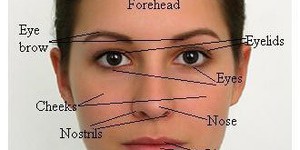Elementary School, Human Behavior Science Projects (28 results)
If you're interested in learning more about how people think, what motivates them, how well their memories work, or any other of the fascinating things that make us human, then you're in the right place!
|
Select a resource
Coding Projects
Sort by
|
How do you feel right now? Do you remember how you felt a few hours ago? How about yesterday or last Wednesday? What if you could track your emotions throughout the day and use this information to help improve your mood and well-being? In this science project, you will program a simple, pocket-sized device that you can carry around with you to log your feelings whenever you want or on a specific schedule.
Read more
Can you tell if the pictures on this page are real or generated by a computer? Artificial intelligence (AI) generated images have exploded in popularity, bringing plenty of controversy along with them. An AI-generated image of a tiger or a flower might seem harmless, but artificial images of people or events can contribute to "fake news." In this science project you will investigate whether people can tell the difference between real pictures and pictures generated by AI. Can you spot the…
Read more
New
Are you ever annoyed by a poor Wi-Fi signal? What about when you try to send a text message, and it just won't go through because of poor cell service? Have you ever wondered what factors affect the strength of your signal and the speed of the connection? If so, this project is for you!
Read more
Artificial intelligence (AI) programs can now generate photorealistic pictures of people who do not exist in the real world. How can you tell if a picture is of a real person or a fake, AI-generated person? What features of the picture do people use to decide whether the face is real or AI-generated? In this project, you will explore these questions as you ask volunteers to look at both real and AI-generated pictures of human faces.
Read more
You know how to make new colors by mixing paint or crayons. For example, you get green by mixing yellow and blue, or orange by mixing red and yellow. With paint, blue, yellow, and red are primary colors, which you can use to make other colors. Have you ever tried making colors with light? Are the primary colors the same ones you use for paint? Do this experiment and find out.
Read more
Have you ever had to remember a long list of planets or the state capitals? These kinds of lists are full of interesting facts, but they can be hard to remember, especially for tests. What could you do to remember the list better? In this human behavior science fair project, you will learn about a memory technique called mnemonics (pronounced nuh-MAH-nicks) and investigate whether using mnemonics can help you and your friends remember lists of words.
Read more
New
Can AI understand human language? In the future, AI could aid in emergency interpretive service in the hospital when translators aren't available. But can current AI algorithms understand non-verbal languages like sign language? In this science project, you will test whether AI can learn sign language gestures or phrases to see if it can be used for interpretation.
Read more
Have you ever heard the phrase, "Seeing is believing"? Well, it is more accurate than you might think! In this science project, you can investigate the phenomenon of apparent motion by making your own flip-book animations
Read more
AI (artificial intelligence)-generated text is a hot topic for many reasons. Computers can now generate convincing paragraphs or even pages of text that look like they were written by a human. How do you know if a news article you are reading was written by a human or an AI? How does a teacher know if a student's essay was written by an AI? How do you know this text was not written by an AI? In this science project, you will conduct an experiment to see if volunteers can correctly identify…
Read more
Okay, now you've done it. You goofed off, didn't study for your math test, and didn't do well. Mom and Dad are not going to be happy. In fact, they might even be angry. They don't say anything when they see your test, but you can tell from their faces that they are angry. But how can you tell? How can you tell if someone is angry, or happy, or sad? The answer is that you have learned how to tell someone's emotional state from his or her facial expressions. Are facial expressions of happiness or…
Read more
If someone is smiling, it means they're happy, right? Well, not always. Sometimes people smile to be polite, or because they want to "appear" happy or friendly for social reasons. How easy is it to spot which smiles are genuine and which are fake? Try this science fair project to find out!
Read more
Does talking on a cell phone make one a more dangerous driver? Here is an experiment you can do to investigate whether reaction time is adversely affected by a simultaneous phone conversation.
Read more
|
















